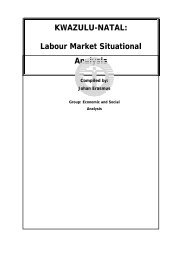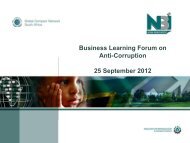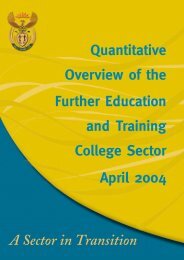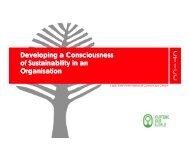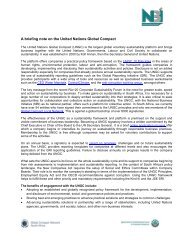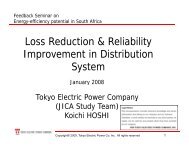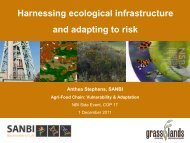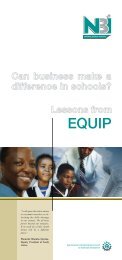Sustainable Forest Finance Toolkit - PwC
Sustainable Forest Finance Toolkit - PwC
Sustainable Forest Finance Toolkit - PwC
- No tags were found...
Create successful ePaper yourself
Turn your PDF publications into a flip-book with our unique Google optimized e-Paper software.
Brazil – country briefing note 2 of 2New Application HOME• Altogether by 2005, about 3.0 million hectares offorests, including planted and native forests had beencertified by one or other or both schemes.• According to BRACELPA, by 2006, 1.6 millionhectares of the 3.1 million hectares of forestlandcontrolled by the Brazilian pulp and paper industry hadbeen certified.• While a high proportion of plantations have beencertified, only a small fraction of native forest has been.• The cost and effort of both obtaining and maintainingcertification has been an issue.OpportunitiesDespite these current pressures, Brazil’s potential as afibre base remains huge.Broad opportunities include:• Production of renewable energy and bio fuels;• Sustained high demand for traditional forestproducts;• Significant potential for increasing the volume oftropical sawn wood.Relating to Eucalyptus plantations, newer areas beingplanted or where sites are being investigated includeRio Grande do Sul, Mato Grosso do Sul and the North-East region.Substantial tracts of land are available away from thehotspots, which have been deforested or otherwisedegraded by poor agricultural practices. These areasmay pose greater logistical challenges given theinherent limitations of the country’s transportinfrastructures, but significant opportunities remain.<strong>Forest</strong> carbon opportunities in BrazilThere are some opportunities too for the forest productsindustry to benefit under CDM. One example is thecogeneration of electricity using forest biomass. The firstBrazilian company from the wood processing sector to sellcredits via the Kyoto Protocol was Celulose Irani, whichreplaced oil-fuelled recovery boilers with equipment usingforest and sawmill waste.There are also a number of non-Kyoto carbon markets,providing voluntary GHG reduction and trading systems foremission sources and offset projects. In the case of Braziland relevant to the forest products sector is the ChicagoClimate Exchange (CCX), which accepts forestry-basedcarbon credits. Reforestation and conservation projects inBrazil and in Mexico are among these. As an example, inJanuary 2007 Klabin started trading carbon credits on CCXderived from its 32,000 hectares of eucalyptus forests.See the forest carbon issue briefing note for furtherinformation.For further informationFor more detailed information onBrazil and South America see ‘Risksand rewards – <strong>Forest</strong>, paper andpackaging in South America’This report includes a regional economic overview.Content for Brazil includes analysis on: Brazil’s economy,forest products, forests and forestry, pulp, paper andpaperboard, paper packaging, wood products and woodbasedenergy. For other South American countries(Argentina, Chile, Colombia & Uruguay) the reportincludes analysis on: their economies, forest products,markets and key players. The report also includesinsights from industry, interviews with International Paperand Votorantim Celulose e Papel and a summary of therisks and rewards of doing business in the sector.Page 61pwc



